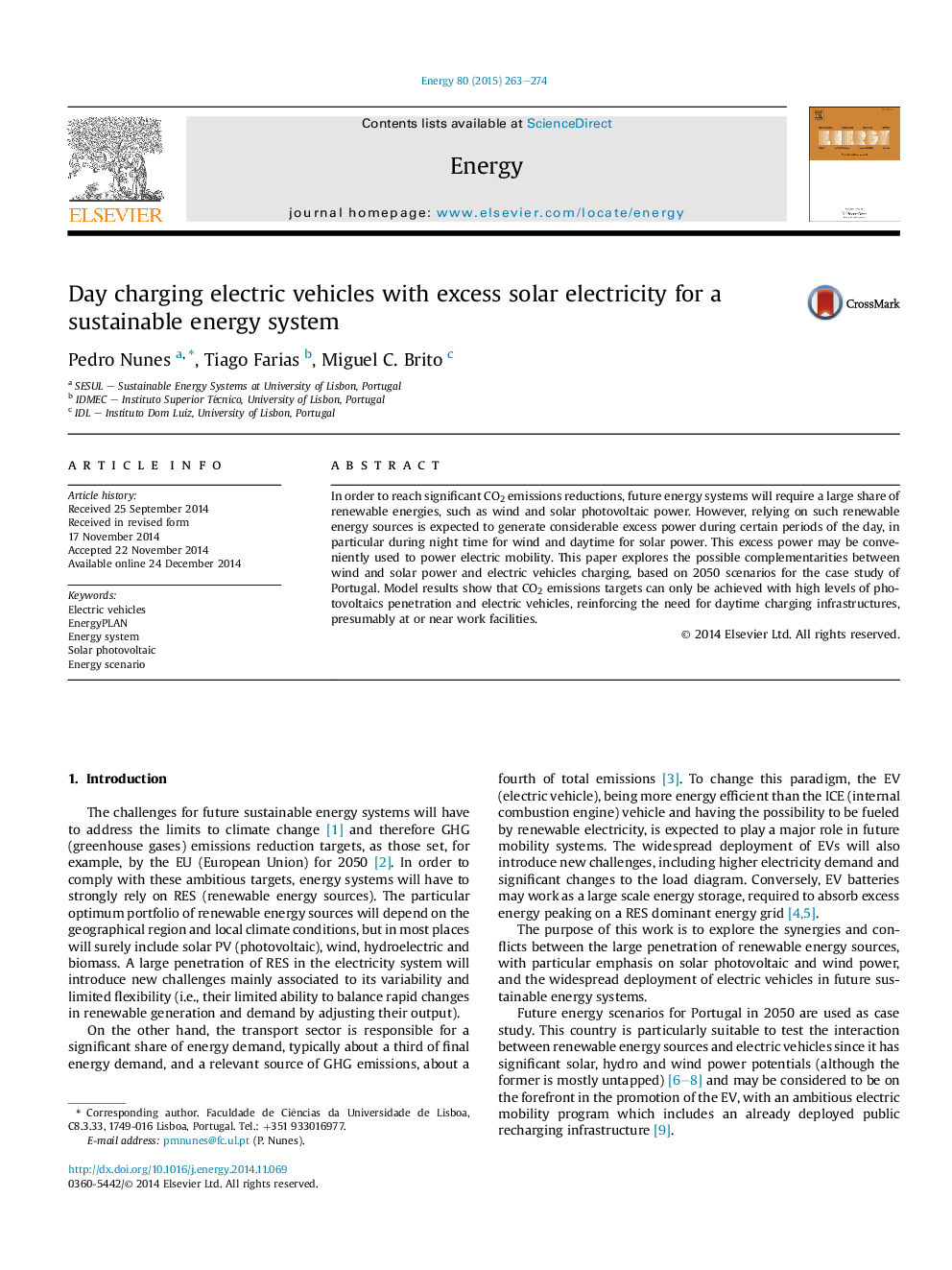| Article ID | Journal | Published Year | Pages | File Type |
|---|---|---|---|---|
| 1732006 | Energy | 2015 | 12 Pages |
Abstract
In order to reach significant CO2 emissions reductions, future energy systems will require a large share of renewable energies, such as wind and solar photovoltaic power. However, relying on such renewable energy sources is expected to generate considerable excess power during certain periods of the day, in particular during night time for wind and daytime for solar power. This excess power may be conveniently used to power electric mobility. This paper explores the possible complementarities between wind and solar power and electric vehicles charging, based on 2050 scenarios for the case study of Portugal. Model results show that CO2 emissions targets can only be achieved with high levels of photovoltaics penetration and electric vehicles, reinforcing the need for daytime charging infrastructures, presumably at or near work facilities.
Related Topics
Physical Sciences and Engineering
Energy
Energy (General)
Authors
Pedro Nunes, Tiago Farias, Miguel C. Brito,
